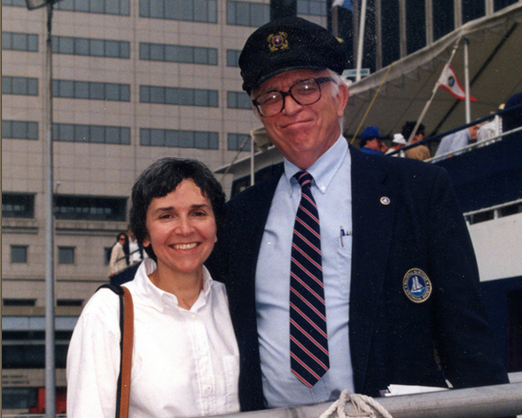The Lover of White Sails

Peter Stanford loves sailing ships. Who can blame him? Their white canvas geometries unfurling, billowing in the wind, catching the sunlight, are visions we can still from time to time enjoy on the East River and New York’s Upper Bay. Thanks to Stanford, who grew up in Brooklyn Heights, the son of a man who served in the U.S. Navy in both world wars, the age of sail has not entirely vanished from its New York home. That is largely because Stanford and his wife Norma on their wedding trip in 1965 got the idea for South Street Seaport Museum and then worked tirelessly to see it realized.
They now tell the story in their book “A Dream of Tall Ships” (Sea History Press, Peekskill, NY, $34.95, available through www.seahistory.org).
In the course of their effort to save some surviving relics of sail-powered commerce and to return them to the “Street of Ships,” as South Street was known in the 1800s, when the bowsprits of clippers, brigs and schooners projected over it at the river’s edge, Peter also became president of the then struggling National Maritime Historical Society and had offices in the former fireboat house at Fulton Ferry Landing, now home to the Brooklyn Ice Cream Factory. (A sidelight, not in the book, is that Peter in 1978 promoted “East River Renaissance,” a precursor to the idea of Brooklyn Bridge Park.)